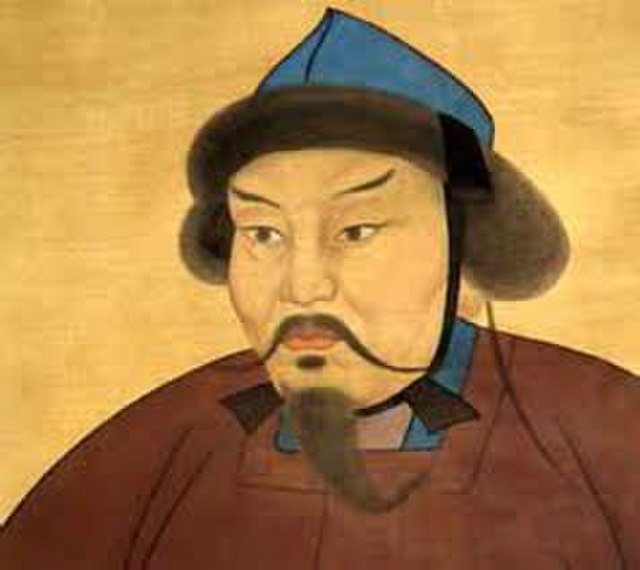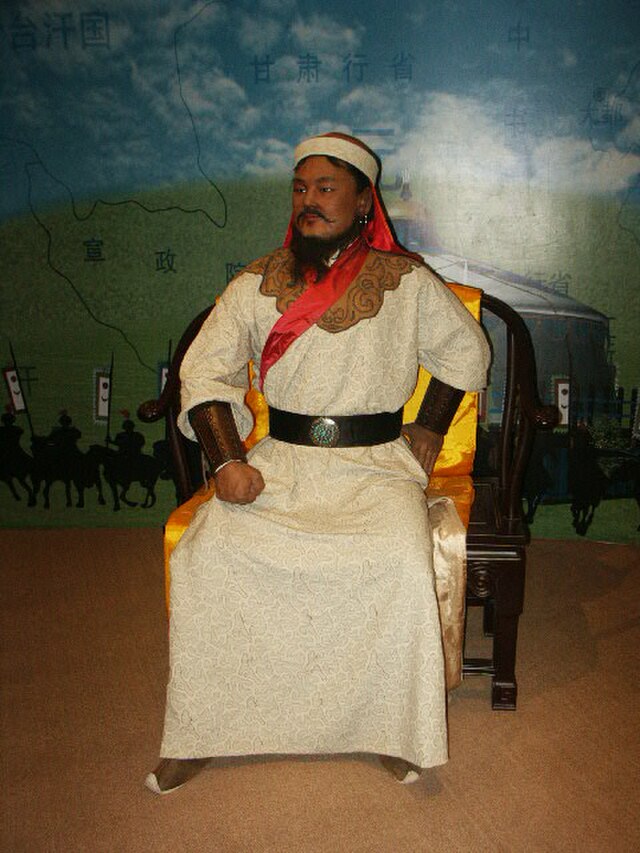
Genghis Khan is widely regarded as one of the most influential and powerful leaders in world history. As the founder of the Mongol Empire in the 13th century CE, he united the nomadic tribes of the Mongolian plateau and went on to conquer vast swathes of territory across Asia and Eastern Europe. At its peak, the Mongol Empire was the largest contiguous land empire ever, stretching from Eastern Europe to the Sea of Japan. Genghis Khan’s military genius, brutality, and political acumen enabled him to build this enormous empire in just over two decades.
Early Life and Tribal Leader
Genghis Khan was born as Temüjin around 1162 CE near the Burkhan Khaldun mountain in modern-day Mongolia. He was the first son of Yesügei, the chieftain of the Khamag Mongol confederation of nomadic tribes. Temüjin had a difficult childhood - his father was poisoned by a rival tribe when Temüjin was just 9 years old. This left Temüjin and his family abandoned and impoverished, forced to subsist on wild fruits, carrion and whatever small game they could hunt.
Despite these humble beginnings, Temüjin grew into a strong and clever young man. He married a woman named Börte from the Onggirat tribe when he was around 16, cementing an important political alliance. Soon after, Temüjin began attracting followers and allies, building up his power base among the Mongol tribes. He had several key rivals during this period, including Jamukha and Toghrul Khan of the Keraites tribe. Temüjin prevailed over them after a series of clashes known as the Four Oirat Wars, fought between 1203 and 1205 CE.
In 1206 CE, Temüjin officially took the title “Genghis Khan”, meaning “Universal Ruler”, bringing the many Mongol tribes under his banner. He implemented an innovative political structure to unite the tribes, granting loyal allies high positions in his new government regardless of tribal affiliation. He also instituted meritocracy, religious freedom, and encouraged adoption of useful foreign technology - policies which would aid in administering his growing empire.
Conquests and Expansion of the Mongol Empire
After uniting the Mongol tribes, Genghis Khan began a series of campaigns to expand his empire outward. His first conquests were the Western Xia and Jin dynasties, falling in 1209 CE and 1234 CE respectively. The Jin Dynasty ruled northern China, and Genghis usedadopted siege warfare tactics and technology like catapults to systematically capture their heavily fortified cities.
The Khwarezmian Empire, which spanned modern Iran, Turkmenistan, and Afghanistan, was Genghis Khan’s next target. The Shah of Khwarezmia angered Genghis by killing his envoys, so Genghis unleashed the full force of his Mongol cavalry against the empire in 1219 CE. Khwarezmia’s cities like Samarkand, Bukhara and Urgench fell swiftly to the Mongols’ ruthless assault, though they faced stiffer resistance attacking further west into Azerbaijan and Russia. These conquests gave the Mongols control over the pivotal Silk Road trading route between China and Europe.

After securing Central Asia, Genghis Khan invaded the Xi Xia kingdom again from 1226-27 CE, while also dispatching his best generals on campaigns west into Russia, south into the Song Dynasty of China, and north against the Tangut kingdom. By Genghis Khan’s death in 1227, the Mongols had subjugated most of northern China, Russia, Central Asia and Eastern Europe - an empire twice the size of the Roman Empire or Macedonian Empire under Alexander the Great.
Unlike previous nomadic confederations that pillaged and moved on, the Mongols under Genghis Khan governed their empire in an efficient and practical way once an area was subdued. Local leaders who submitted to Mongol authority were usually allowed to continue governing, so long as they collected taxes and supplied troops when demanded. Minorities and religions were generally tolerated. The Mongols did not settle down and become absorbed into the local culture like previous nomadic empires, but retained their distinct Mongol identity and governing structure centered on Genghis Khan’s direct descendants. This enabled them to continue expanding the empire for almost a century after Genghis Khan’s death until internal rivalries caused its division into four regional khanates.
Military Tactics and Innovations
The Mongols were able to advance so rapidly by mastering mobile warfare and cavalry tactics. Genghis Khan organized his armies into nimble units of 10, 100, 1,000 and 10,000 soldiers, enabling them to strategically divide and converge as needed. Cavalrymen were drilled in coordinated movements and each one maintained three or four horses so they could constantly rotate mounts between battles and campaigns. They carried little baggage and lived off the land by hunting and foraging, allowing them to travel up to 90km per day. Every soldier had a sturdy composite bow made from laminated horn, wood and sinew that could penetrate armor at over 150 meters. They used arrows with whistling heads to terrify opponents and signal advancing forces.
Genghis Khan was adept at gathering intelligence by questioning merchants and envoys traversing the trade routes. His extensive network of spies also provided detailed reports on enemy strength and positioning. The Mongols learned siege tactics and technology like catapults and battering rams from captured Chinese and Muslim soldiers. Engineers would drain rivers, build earthen ramps and giant rolling wooden shields called “turtles” to overcome fortified cities’ walls and moats.
Once a city was taken, Genghis Khan would usually execute its leaders and prominent figures while sparing the rest of the population, which was sometimes incorporated into his army. Cities that resisted were completely annihilated and their inhabitants massacred as an example to others. This brutal but calculated warfare inspired dread that caused many cities to surrender promptly to the Mongols to avoid utter destruction.
Death and Succession
Genghis Khan died in August 1227 CE, likely from illness or injuries sustained during a fall from his horse. In typical fashion, the exact circumstances and location of his death were concealed to maintain an aura of invincibility. He was buried in an unmarked grave somewhere in his birthplace of Burkhan Khaldun, as were his most prized possessions including the ‘golden tablet’ listing the names of his allies turned enemies whom he planned to eliminate. Genghis Khan had declared that these burial spots remain secret forever, so their locations are still unknown.
Before his death, Genghis Khan divided his empire among his four sons, while designating his third son Ögedei as the Great Khan to be his main successor. The Mongol nobles accepted this arrangement, maintaining unity during the initial succession period. Ögedei further expanded the Mongol Empire during his reign until his death in 1241 CE, when his son Güyük took over until 1248 CE. Eventually, power struggles led to open civil war and then the division of the empire into the Golden Horde in Russia, the Ilkhanate in Persia, the Chagatai Khanate in Central Asia and the Yuan Dynasty in China after the Mongol conquest of the Song in 1279 CE. But the enormous empire and political structure created by Genghis Khan in just over two decades made him undisputed as the founding father and driving force of the Mongol Empire.

Legacy and Impact
Genghis Khan is one of the most famous and impactful leaders in world history. His life story and accomplishments became legendary across Asia and Europe. The Mongol Empire he founded connected and reshaped the economies and cultures of multiple continents. Mongol rule introduced paper currency, exploding shells, maps and census taking in Russia, the Middle East and China. Religious pluralism flourished within the empire, with Buddhists, Muslims, Christians, Taoists and other faiths coexisting in Mongol territrories. Foreign specialists like astronomers, doctors and artisans were brought to Mongol courts and settlements. The increased trade and communication networks established across Eurasia during the Pax Mongolica are indirect antecedents to modern globalization.
However, Genghis Khan’s legacy is still controversial due to the extreme violence and destruction unleashed by the Mongols’ expansion. Over 40 million people may have perished in the conquests under Genghis Khan and immediate successors. So his lasting impact as either a ruthless warmonger or a visionary leader who forcibly unified much of Asia is debated among historians to this day. Genghis Khan is undeniably among the most influential people to have walked the Earth, for better or worse. The grasslands of Mongolia remain sparsely populated even today, nearly 800 years after the reign of its most renowned son.
References
Allsen, Thomas. “Culture and Conquest in Mongol Eurasia.” Cambridge University Press, 2004.
Cribb, Roger. “Nomads in Archaeology.” Cambridge University Press, 1991.
Man, John. “Genghis Khan: Life, Death, and Resurrection.” St. Martin’s Publishing Group, 2004.
Moses, Larry, and Stephen A. Halkovic. “Introduction to Mongolian History and Culture.” 2012. https://fieldsupport.dliflc.edu/products/cip/mongolia/mongolia.pdf
Weatherford, Jack. “Genghis Khan and the Making of the Modern World.” Three Rivers Press, 2004.